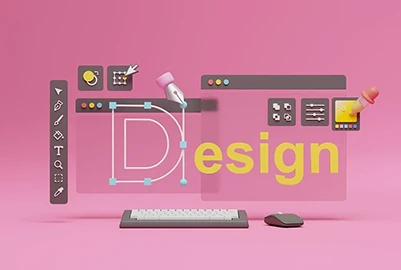Want to learn what makes an advertising design fascinating and drives viewers to buy something? Read this guide to understand this, the different types of advertising design, and how to ace each!
Ads are a versatile medium that inform and entice. Today’s marketplace can get quite competitive, and it is natural to want something special that captures attention, communicates value, and inspires action in your target audience. This is where advertising design steps in!
It is the visual and conceptual foundation of your promotional activities. From printing a jaw-dropping visual on the first page of a newspaper to captivating drivers while they pass by a billboard, advertising can be the ultimate recipe for a brand’s success and profitability. In this blog, we will discuss the different types of advertising design that you can leverage to promote your business. We will also provide tips on how to create an effective advertising design that is sure to turn potential customers into regular consumers. So, let’s dive in!
- What is Advertising Design?
- Different Types of Advertising Design
- Print Advertising
- Digital Advertising
- Outdoor Advertising
- Direct Mail Advertising
- Video Advertising
- Social Media Advertising
- Email Advertising
- Event Advertising
- Influencer Advertising
- Best Practices for Advertising Design
- Conclusion & Next Steps

What is Advertising Design?
Advertising design is the process of creating and arranging visual elements, typography, and brand messaging to communicate a persuasive idea about a product or service. It is a branch of graphic design that focuses on crafting visual experiences that resonate, inform, and ultimately drive desired behaviors from the target audience.
Advertising design combines creativity with psychology and marketing principles to achieve business goals. Effective advertisements require a meticulously chosen color palette, imagery, fonts, and copy. A graphic designer creating ads must understand market trends, consumer behavior, brand identity, and specific goals so they can translate abstract concepts into tangible visuals that convey a brand’s USPs. A good advertising design is not created just to sell, it is created to tell a story, build credibility, and differentiate your brand from the others.
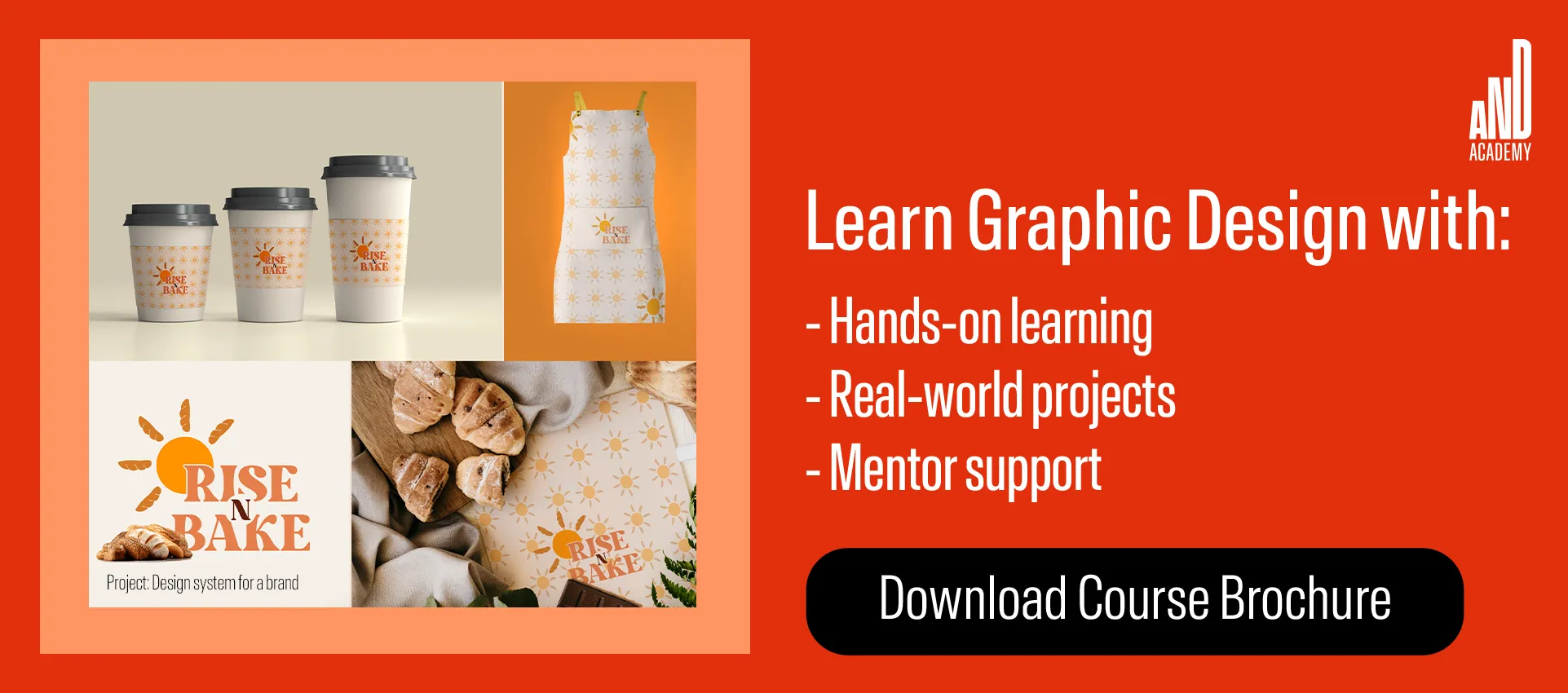
Different Types of Advertising Design
Advertising design is a way of communication and can be done via multiple channels. There are different types of advertising design, each catering to a diverse set of target audiences and their needs. Read on for details on the types.
1. Print Advertising
Print advertising is the most common type of advertising design. It is the promotional content you see displayed in physical, printed media. Despite the rise of digital mediums, print ads are still powerful and a credible way of displaying your brand’s offerings.
Such advertisements are most commonly found in newspapers, magazines, brochures, flyers, and posters. Design for print emphasizes high-resolution imagery in CMYK format, clear typography for readability, and effective layouts that guide the reader’s eye within a static space. Such advertising design emphasizes an impactful message that stands out and encourages immediate engagement.
Example – Heinz’s Innovative Print Ad for their Tomato Ketchup

Image Courtesy: LocalliQ
2. Digital Advertising
Digital advertising is the method to spread your brand message through digital channels. It is one among the dynamic and measurable forms of advertising that enable marketers to understand the impact of their ads on the audience.
This type of advertising design demands adaptability and enhanced creativity. It incorporates interactive elements, animations, and CTAs to capture the audience’s attention. Such ads are created using the RGB color model so that all visuals are rendered perfectly across various screen sizes and devices. Digital ads can be targeted towards a specific demographic. They lead users to a landing page or product listing to encourage specific actions such as submitting a form, buying a product, etc.
Example – The Famous ‘Share a Coke’ Campaign by Coca-Cola

Image Courtesy: Power Textor
3. Outdoor Advertising
Outdoor advertising is also known as Out-of-Home advertising. It is displayed in public spaces to reach consumers when they are outside their homes. This type of advertising design includes billboards, transit ads on buses, trains, and taxis, as well as digital billboards.
To create impactful outdoor ads, it is important to have a powerful, concise, and highly visible message that can make people stop and stare. Such ads should be designed in a way that they can be absorbed quickly by people on the move and from a distance. To ensure this, designers should use bold graphics, large fonts, minimal text, and high contrast for higher readability and immediate impact.
Example – Outdoor Ad for Dior
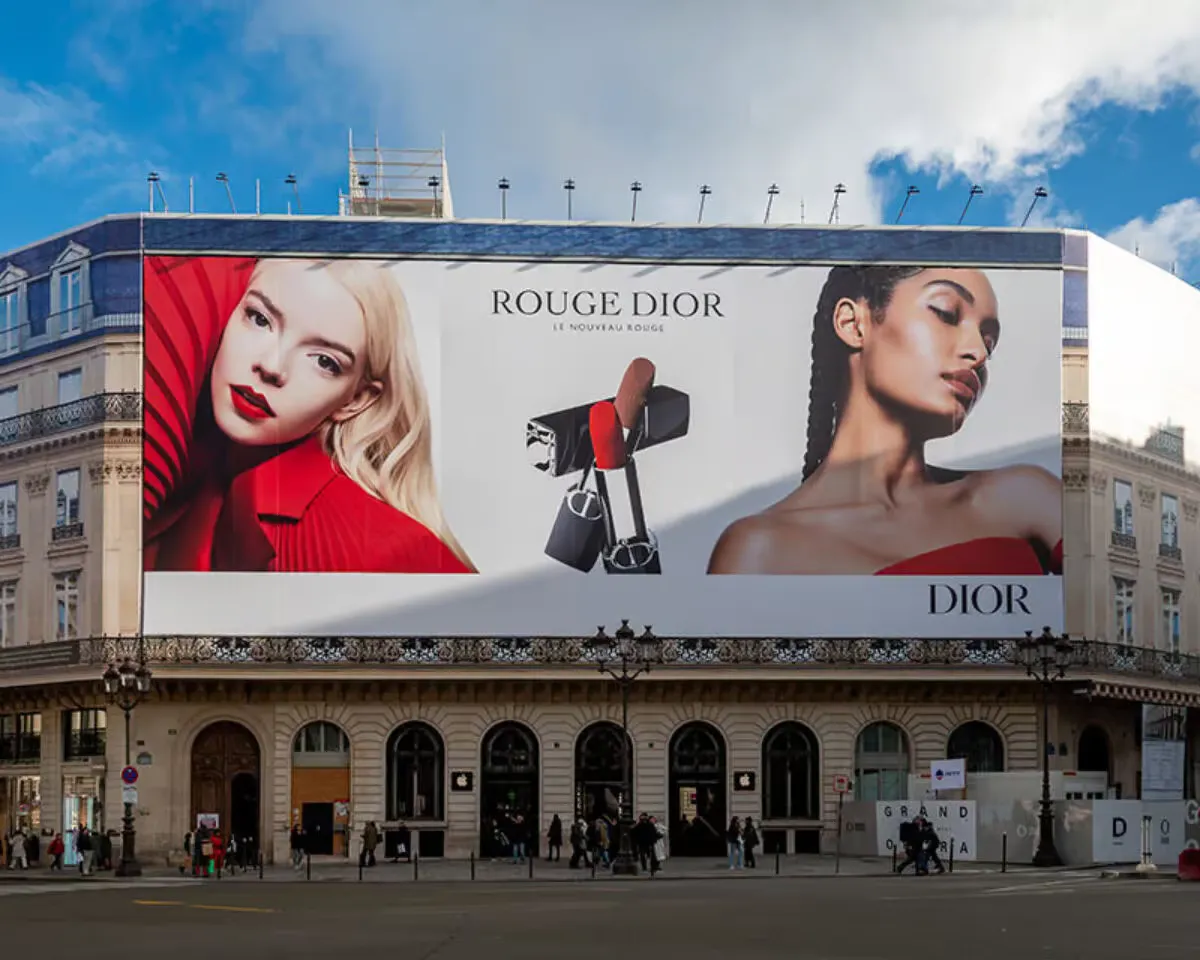
Image Courtesy: DSA Signage
4. Direct Mail Advertising
Direct mail advertising refers to sending physical promotional materials directly to target consumers via postal services. This can include postcards, brochures, catalogs, or samples. This is a traditional method of advertising which is highly effective due to its personalized approach.
This type of advertising design requires creating visually appealing ads that encourage recipients to open, read, and respond. There should be a clear value proposition, compelling headlines, and strong calls to action. These ads help build personal connections and drive engagement from the audience.
Example – Famous Direct Mail Ad Design by Kitkat
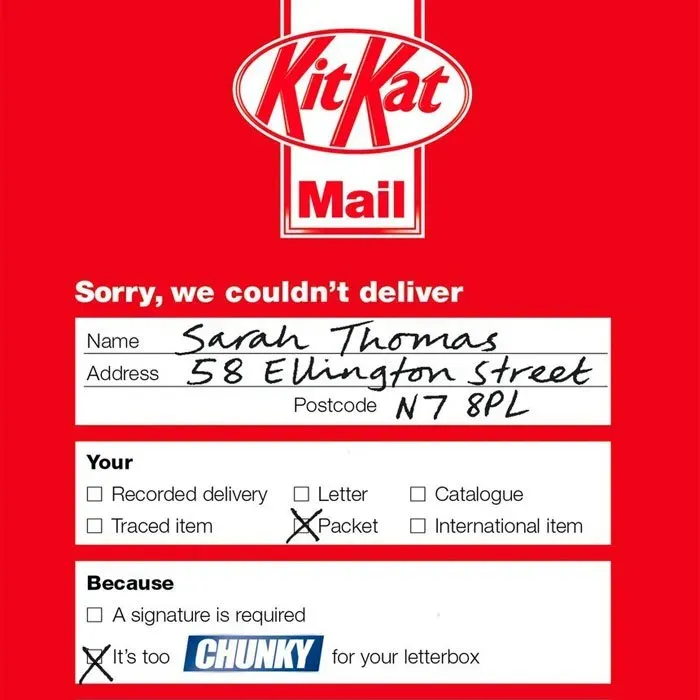
Image Courtesy: Washington Direct Mail
5. Video Advertising
Video advertising involves motion graphics design to create and disseminate promotional content in video format across various digital platforms. With tools like an online video editor, brands can craft high-quality videos that tell their stories and resonate with diverse audiences. Integrating creative technologies such as Image to Video AI can further enhance visual storytelling by transforming static visuals into dynamic, eye-catching motion content.
To create an effective video ad, it is important to ensure top-notch cinematography, editing, motion graphics, and sound design. Using AI voice cloning can also elevate your ad’s emotional impact by generating authentic, customizable voiceovers that capture your brand’s tone. The key is to grab the viewer’s attention within the first few seconds and maintain engagement throughout both short- and long-form videos.
Example – Uber Eats’ Creative Video Ad

Image Courtesy: WebFX
6. Social Media Advertising
Social media advertising is one of the most popular ways of promoting a product or service nowadays. It refers to the paid promotional content delivered via social media platforms such as Facebook, Instagram, Twitter, LinkedIn, etc This type of advertising design uses vibrant images, short videos, carousels, or interactive polls. For such ads, designers should use bold typography and color combinations with attractive images to capture the attention of a user.
Social media marketing ads are highly effective due to the massive user bases of the platforms and allow you to target your exact audience. However, it is also highly competitive and requires designers to create engaging designs that can make people stop scrolling.
Example – Snickers’ Social Media Ad Campaign
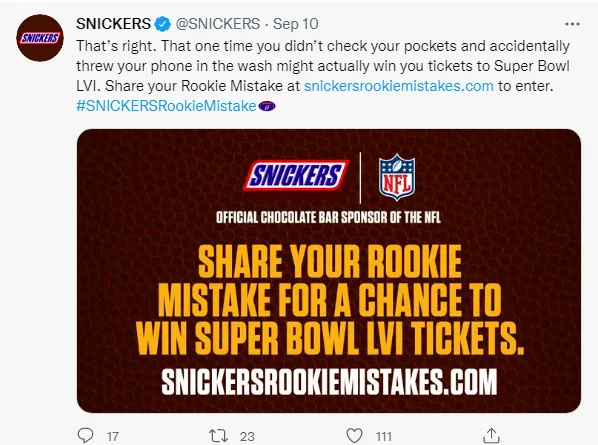
Image Courtesy: WebFX
7. Email Advertising
Email advertising refers to sending promotional messages directly to a group of people via email. This can include newsletters, promotional offers, product updates, event invitations, or personalized recommendations. Such designs focus on creating visually appealing and mobile-responsive layouts that encourage opens, clicks, and conversions.
Key considerations for this type of advertising design should include compelling subject lines, attractive hero images, clear calls to action, easy-to-read typography, and a balance between text and visuals. It is also crucial to focus on personalization, segmentation, and A/B testing to ensure optimal performance.
Example – Promotional Email Advertisement by Starbucks
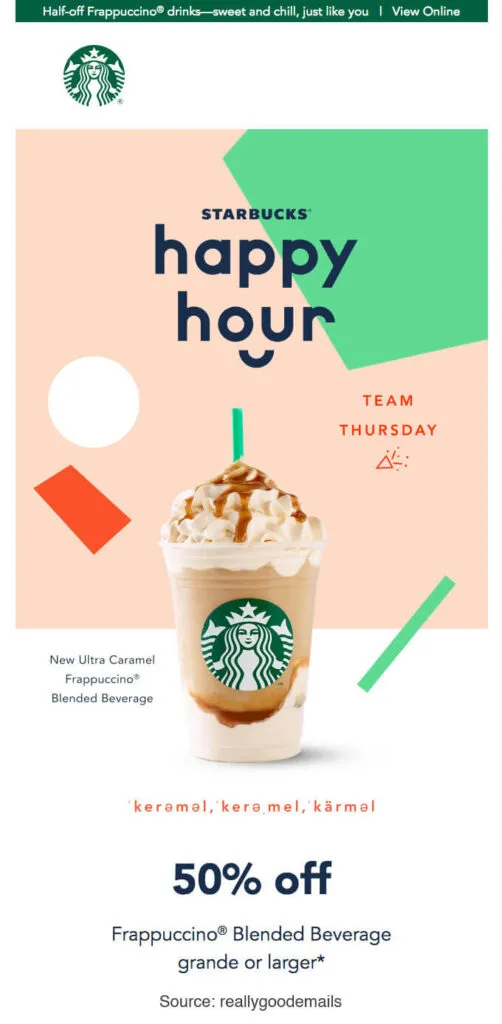
Image Courtesy: NotifyVisitors
8. Event Advertising
Event advertising is aimed at promoting an event to attract attendees. This type of advertising design is created with a focus on the multi-channel approach. It leverages print, digital, social media, and outdoor advertising and tailors it to convey the purpose and key details of the event.
To create event ads, use elements that capture the event’s mood, theme, and atmosphere. Also, utilize memorable visuals that would captivate the audience and create a feeling of anticipation. The ultimate goal of such ads is to generate buzz and ensure a successful turnout.
Example – The World Tour Poster for the Famous Band Coldplay Creating Anticipation for the Mystery Guest
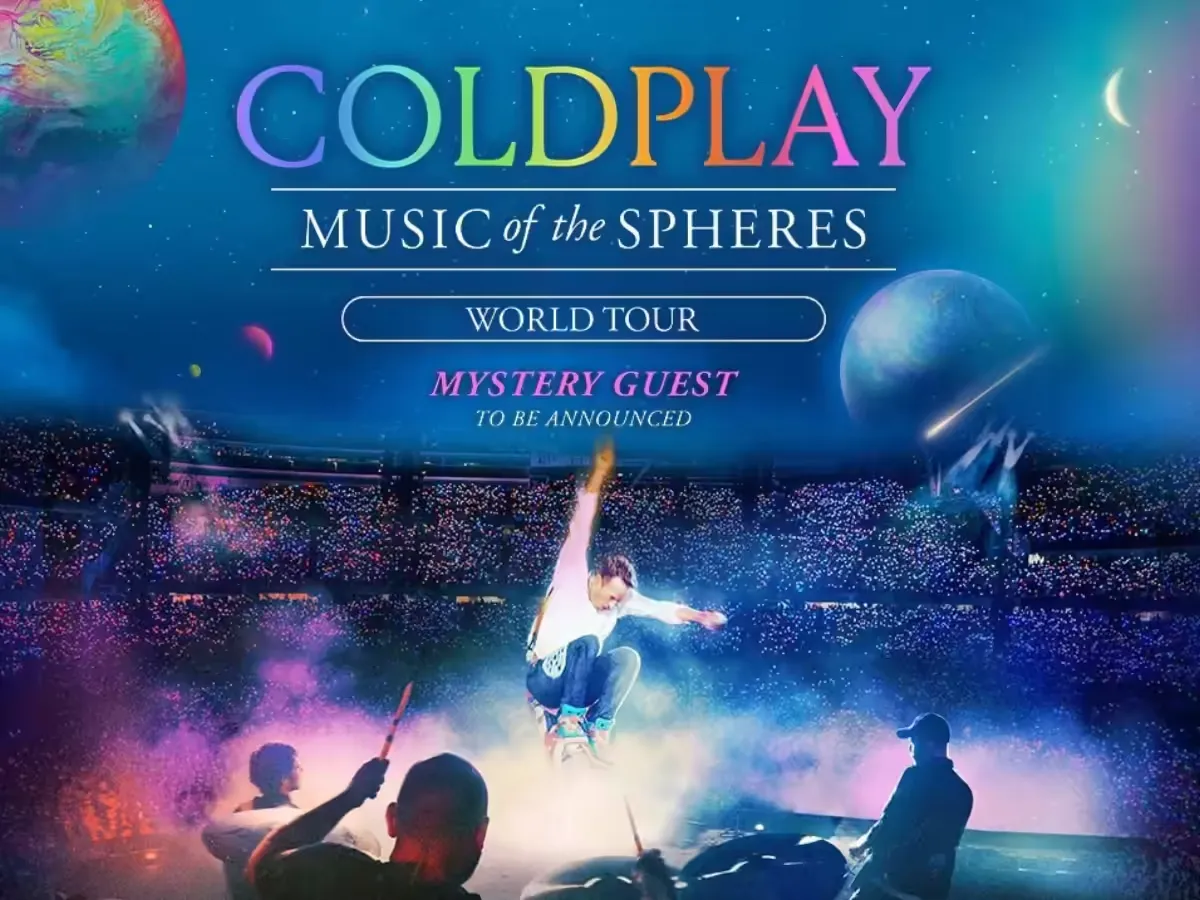
Image Courtesy: The Economic Times
9. Influencer Advertising
Influencer ads leverage the credibility and reach of individuals with dedicated online followings to promote products or services. This type of advertising design plays a crucial role in ensuring the product looks visually appealing, on-brand, and optimized for its intended platform.
It is essential that the visual style of the brand matches that of the influencer. This ensures that the content looks authentic. Adding interesting visual elements and editing such ads to perfection is crucial to ensure their efficacy.
Example – Nike Partnering with Promising Athletes

Image Courtesy: Brandwatch
Best Practices for Advertising Design
Creating impactful advertising design needs strategic execution along with creativity. So, here are some tips to help you create compelling advertising designs that are aesthetic as well as effective.
- Understand the Target Audience – It is foundational to understand who your ad is actually intended for. Ensure you decide your color palette, imagery, tone of voice, and copy according to what your target audience prefers. This will help you design an ad that resonates well and has the effect you want.
- Clarity and Simplicity – Information overload is a common problem among people, and to combat this, designers must convey messages in a way that is clear and simple. It is best to avoid clutter, excessive text, or overly complex visuals that might confuse the viewer. A strong and clear visual hierarchy ensures the most important elements of the product are highlighted and the design has the intended impact on the viewer.
- Consistent Branding – Your advertising designs should always align with your overall brand identity. This includes color scheme, typography, imagery style, logo, and brand voice. Consistent branding helps you build trust and credibility, making your brand recognizable.
- High-Quality Visuals – Your ads are like the spokesperson for your brand. They can heavily impact the first impressions and perception. Avoid blurry images, pixelated graphics, or poorly shot videos as they can diminish your brand’s value. Ensure you use high-quality visuals so people can perceive your brand as professional and relevant.
- Test and Iterate – Advertising design is not just about designing an ad; it is about creating visuals that represent a product or service. It is important that designers test ads that use different images, font styles, headlines, and layouts to understand what audiences prefer. This process will refine your designs and ensure they work optimally.

Conclusion
Advertising design can open up various channels of communication for your business. It is a strategic, visual medium that can change the way you market your product or service. We hope this guide on different types of advertising design offered you insights on what kind of ads you can leverage to promote your brand and drive profitability for your business.
Next Step
You can check out this project by AND Learner, Dushyant Singh, to get inspiration for your next advertising design project!
In case you need further assistance, here are some of our resources you can consider:
- Watch this session by design veteran and AND’s Academic Head, Prachi Mittal, and our Course Lead, Soumya Tiwari.
- Talk to a course advisor to discuss how you can transform your career with one of our courses.
- Pursue our Graphic Design courses – all courses are taught through live, interactive classes by industry experts, and some even offer a Job Guarantee.
- Take advantage of the scholarship and funding options that come with our courses to overcome any financial hurdle on the path to your career transformation.
Note: All information and/or data from external sources is believed to be accurate as of the date of publication.







